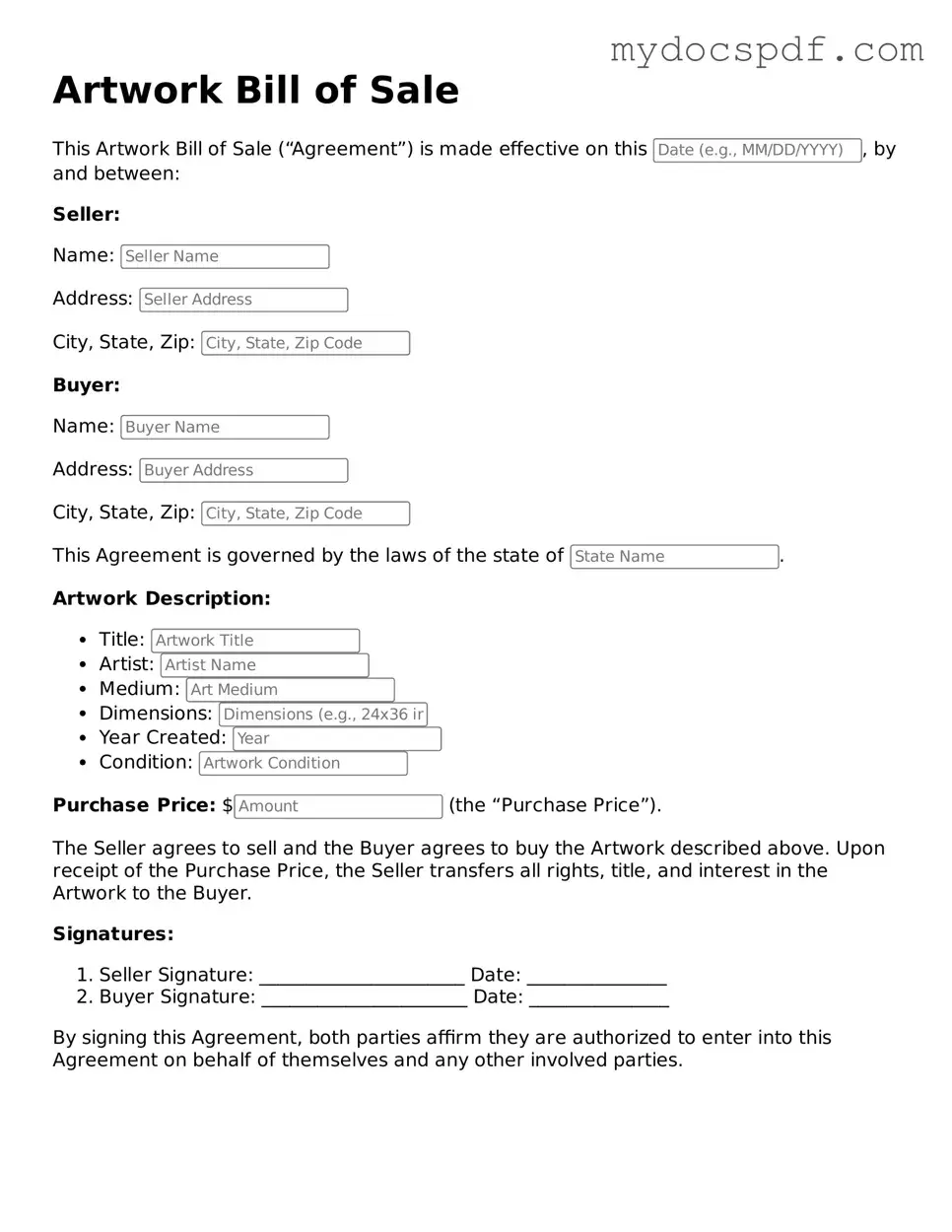Attorney-Approved Artwork Bill of Sale Template
An Artwork Bill of Sale form is a legal document that transfers ownership of artwork from one party to another. This form outlines important details such as the description of the artwork, the purchase price, and the signatures of both the buyer and seller. Using this form helps ensure a clear and documented transaction, protecting the interests of both parties involved.
Access Editor Here
